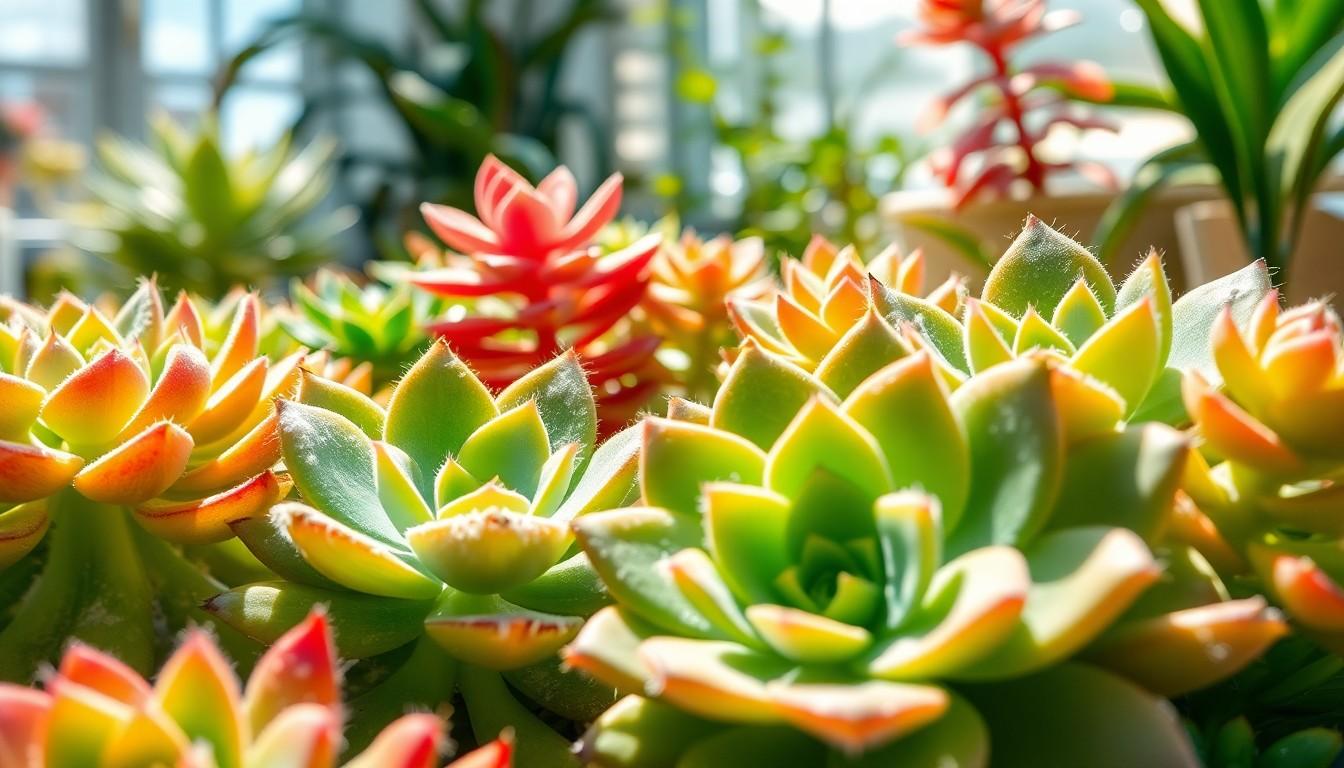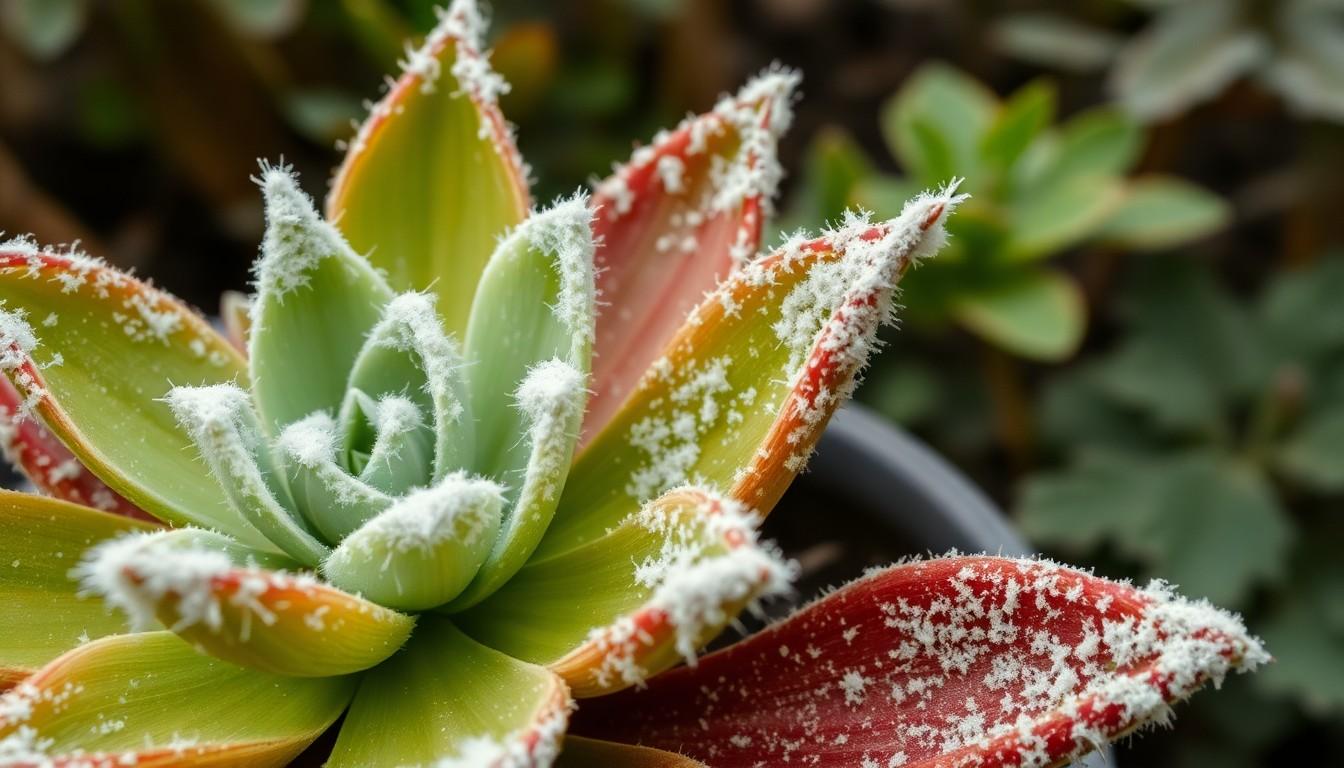The Best Fluffy Pancakes recipe you will fall in love with. Full of tips and tricks to help you make the best pancakes.

White Mold on Succulents: Top Tips to Diagnose and Cure Your Plants
Succulents are the trendsetters of the plant world, bringing a splash of green to any space with their quirky shapes and vibrant colors. But what happens when these charming little beauties start sporting an unwanted accessory: white mold? It’s like finding out your favorite dessert has a side of broccoli—unexpected and not exactly delightful.
White mold can sneak up on even the most seasoned plant parents, leaving them scratching their heads and wondering if their beloved succulents have joined a secret fungal club. Fear not! Understanding this pesky problem is the first step toward keeping those succulents thriving and mold-free. Dive into the world of white mold, and discover how to reclaim your plants’ glory while keeping your sense of humor intact. After all, who knew gardening could come with its own set of surprises?
Overview of White Mold on Succulents
White mold on succulents appears as a powdery film or fuzzy growth on leaves and soil. Various factors contribute to its presence, including excessive humidity, poor air circulation, and overwatering. Identifying these conditions helps in addressing the mold effectively.
Symptoms often include discoloration or a wilted appearance in succulent leaves. Initially, the affected areas may not show severe damage, but neglecting the issue can lead to further decline. Owners should monitor these signs to prevent serious health problems in their plants.
Various species of fungi create white mold, with Sclerotinia sclerotiorum being one common type. This pathogen typically thrives in environments with high moisture levels. Managing water and humidity prevents mold growth and maintains succulent health.
Effective treatment methods exist for white mold. They involve removing affected leaves, improving airflow, and adjusting watering practices. Homeowners can also apply fungicides tailored for indoor plants if the problem persists.
Regular care practices enhance plant resilience against white mold. Providing well-draining soil, ensuring pots have drainage holes, and placing succulents in bright but indirect sunlight create ideal growing conditions. Awareness of mold risks empowers owners to take proactive measures.
Taking care of succulents involves understanding their needs and responding quickly to issues. With proper attention, it’s possible to enjoy healthy plants free from white mold infestations.
Causes of White Mold on Succulents

Understanding the causes of white mold helps in effective prevention and treatment. Several factors contribute to the development of this issue.
Environmental Factors
High humidity levels often create conditions conducive to white mold. Poor air circulation around succulent plants leads to moisture accumulation, which fosters fungal growth. Overwatering contributes significantly to excess moisture in soil, increasing susceptibility to mold. Conversely, placing succulents in low-light areas may also hinder proper evaporation. Consider adjusting the environment to improve airflow and expose plants to adequate sunlight.
Plant Stressors
Overwatered succulents often experience stress that makes them more vulnerable to mold infestations. Nutrient deficiencies weaken plant defenses against pests and diseases. Extreme temperature fluctuations can also cause additional stress, resulting in susceptibility to mold. Crowded plants tend to compete for resources and may not receive sufficient airflow. Addressing these stressors promotes healthier plants that can resist white mold effectively.
Identification of White Mold on Succulents
Identifying white mold on succulents requires keen observation of the plants’ condition. Noticing distinct visual symptoms helps in prompt detection.
Visual Symptoms
A powdery film or fuzzy texture typically characterizes white mold on leaves. This growth often appears on the upper side of foliage, making it easily noticeable. Discoloration may occur, turning leaves yellow or brown. Additionally, leaves might develop a wilted, lifeless appearance. If humidity levels rise or air circulation decreases, these symptoms can intensify, affecting more parts of the plant.
Similar Conditions
Several conditions can mimic white mold’s appearance on succulents. Powdery mildew resembles white mold and thrives in high humidity. Alternaria leaf spot causes dark, sunken lesions that can appear fuzzy. Root rot often leads to wilting and yellowing, which can mislead plant owners. Recognizing these differences is crucial for effective treatment, as addressing mold requires different approaches than addressing similar fungal infections.
Treatment Options for White Mold
Multiple treatment options exist for managing white mold on succulents. Both natural remedies and chemical solutions provide effective interventions for this fungal issue.
Natural Remedies
Diatomaceous earth functions as a natural pest control method and can help combat white mold. Applying this powder directly on the affected areas disrupts the mold’s growth. Neem oil offers another option; its antifungal properties inhibit mold development when mixed with water and sprayed on the plant. Vinegar mixed with water can also serve as an effective fungicide; its acidity helps eliminate mold without harming the succulent. Adjusting environmental conditions proves critical; increasing airflow and reducing humidity can significantly lessen mold growth. Regularly inspecting succulents for early signs of white mold allows for prompt action, preventing extensive damage.
Chemical Solutions
Fungicides present a reliable method for addressing white mold when natural remedies fall short. A broad-spectrum fungicide containing ingredients like propiconazole or chlorothalonil can effectively eradicate the fungus. Following label instructions ensures safe application; targeted spraying on affected areas maximizes results. For particularly severe cases, systemic fungicides are available, which work from within the plant. Utilizing these products may require repeated applications based on product recommendations. Maintaining a consistent schedule enhances the effectiveness of chemical solutions. Ultimately, combining chemical approaches with good cultural practices provides a comprehensive strategy for controlling white mold on succulents.
Prevention Strategies for White Mold
Maintaining healthy succulent plants involves proactive measures that minimize the risk of white mold. Implementing careful care practices and managing environmental factors plays a crucial role.
Care Practices
Proper watering techniques significantly impact mold prevention. Watering succulents only when the soil is dry reduces excess moisture. Additionally, regular pruning of dead or damaged leaves helps improve airflow around the plant. Choosing well-draining soil ensures quick moisture evaporation, further preventing mold growth. Fertilizing with appropriate nutrients supports overall plant health, making succulents more resilient. Rotating pots regularly enhances light exposure and airflow, fostering a healthier growing environment.
Environmental Controls
Managing humidity levels is essential for preventing white mold. Utilizing fans or ensuring adequate air circulation in the growing space prevents moisture accumulation. Placing succulents in bright, indirect sunlight helps lower humidity and promotes evaporation. It’s crucial to avoid overcrowding plants, as this limits air movement and creates a damp environment conducive to mold. For indoor gardening, using a dehumidifier can further control moisture levels. Monitoring temperature fluctuations protects succulents from stress, enhancing their ability to resist mold infestations.
Conclusion
White mold on succulents can be a frustrating issue for plant enthusiasts. By understanding its causes and symptoms, owners can take proactive steps to protect their beloved plants. Implementing effective treatment strategies and maintaining optimal growing conditions are essential for preventing mold growth.
With proper care and attention to environmental factors, succulents can thrive and remain vibrant. Embracing a lighthearted approach to gardening challenges can make the experience more enjoyable. Ultimately, a little diligence goes a long way in ensuring healthy succulents that bring joy to any space.
